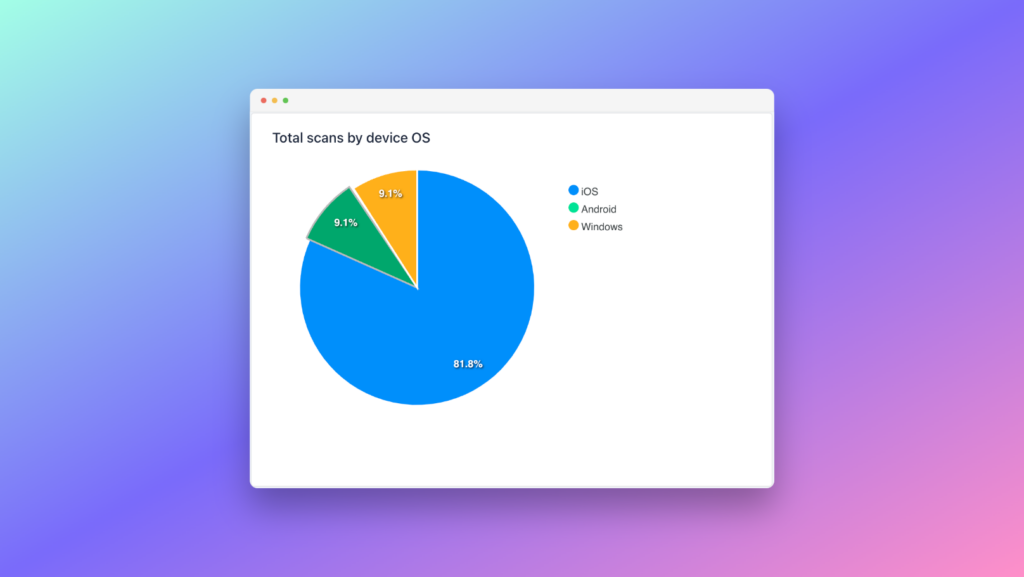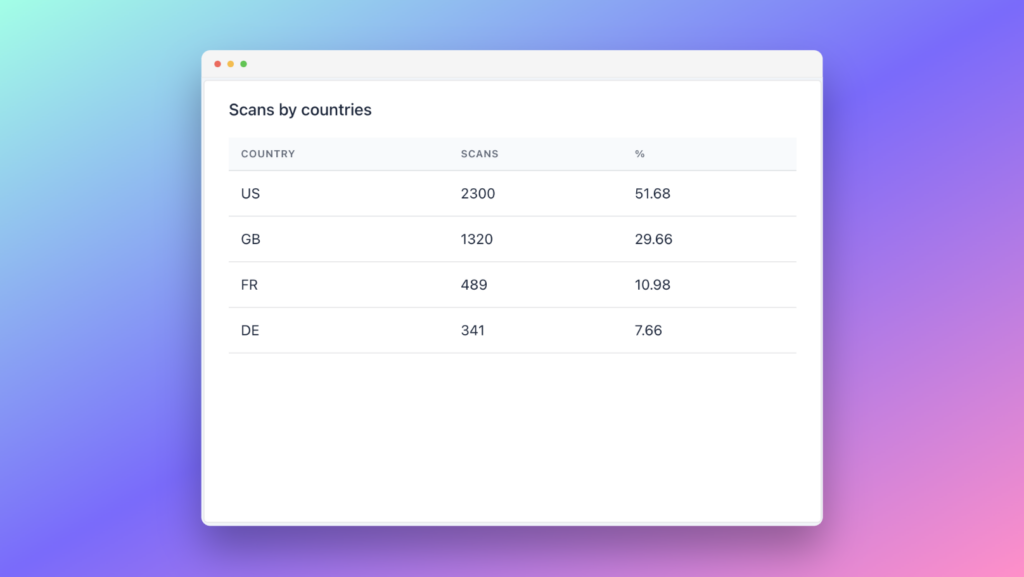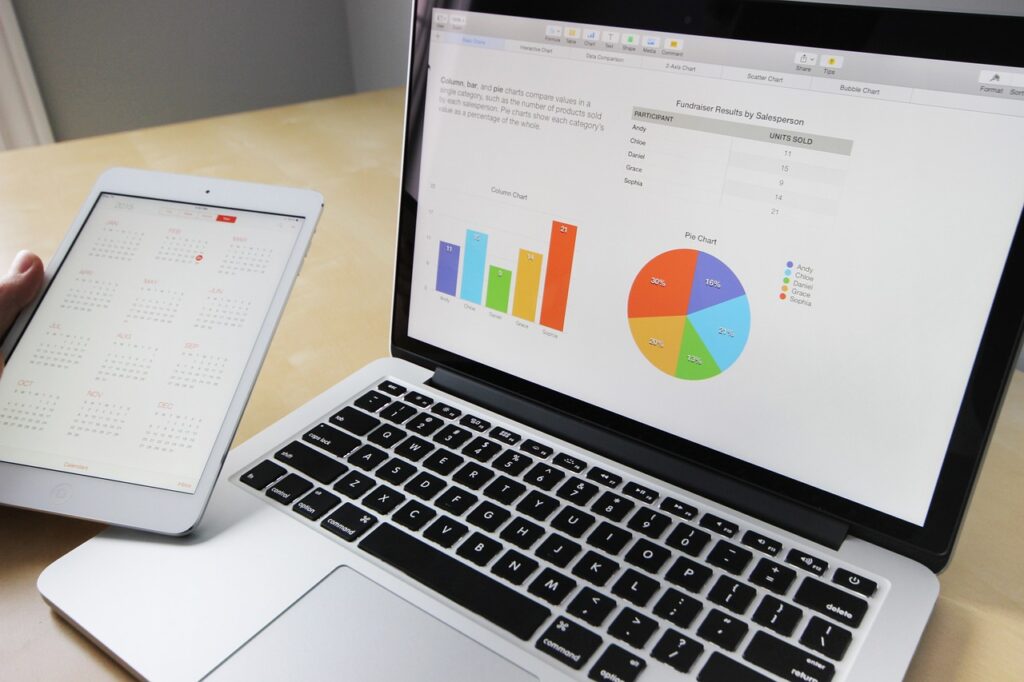Curious to know how QR code tracking works?
Discover the power of these versatile codes that bridge the offline and online worlds seamlessly. In this article, we’ll delve into the different types of QR codes and explore their tracking capabilities. First, we’ll explore dynamic QR codes that are easily trackable. Next, we’ll uncover static QR codes that lack tracking features. Then, we’ll dive into the benefits of QR code tracking and explore the most important metrics to measure its effectiveness, such as operating system, location, and total opens (scans).
Ready to unlock the potential of QR code tracking? Let’s dive in!
- Trackable: Dynamic QR Codes
- Untrackable: Static QR Codes
- What are the benefits of QR Code tracking?
- What are the most important QR Code metrics?
- Operating system
- Location (city & country)
- Total number of opens
1. Trackable: Dynamic QR Codes
QR code tracking allows you to monitor the performance and effectiveness of your marketing campaigns. With dynamic QR codes, you can update the content of QR code without changing the QR code itself. Dynamic QR enables you to track the number of scans, location, date, and time. Here are some benefits of using trackable QR codes:
- Performance Analysis: Gain insights into scan rates, demographics, and user engagement.
- Almost real-time Data: Monitor campaigns in almost real-time to make quick adjustments and optimize results. OpenQR tracking reports have 15 min delay.
- ROI Measurement: Track the success of your QR code campaigns and determine their return on investment.
2. Untrackable: Static QR Codes
Static QR codes are untrackable, meaning they do not provide any data on their usage. These codes contain fixed information, for example a website URL or contact details, and do not allow for tracking or analytics. However, they are still widely used for basic purposes such as sharing contact information or website links. Here are some key points to note about static QR codes:
- They cannot provide insights into user behavior or engagement.
- Changes to the linked content require generating a new QR code.
- They can work forever even if the platform which generated the QR code is no longer available.
3. What are the benefits of QR Code tracking?
QR code tracking offers several advantages:
- Improved marketing campaigns: By tracking QR codes, businesses can gain insights into customer behavior and tailor their marketing strategies accordingly.
- Accurate data analytics: QR code tracking provides precise data on customer interactions, helping businesses understand how effective their marketing efforts are.
- Almost a real-time monitoring: Tracked QR code reports are updated every 15 min.
- Targeted retargeting: Analyze QR code data to retarget specific customer segments, boosting engagement and conversions.
Using QR code tracking ensures businesses stay ahead in the competitive market by making data-driven decisions and optimizing their marketing campaigns.
4. What are the most important QR Code tracking metrics?
When it comes to QR code tracking, several metrics are crucial to analyze your campaign’s success:
- Scan Rate: Determines the number of times a QR code is scanned.
- Location: Identifies where the scans occurred, providing insights into user behavior.
- Device Type: Helps understand which devices users utilize for scanning.
- Time and Date: Reveals the most active periods for engagement.
By focusing on these QR code metrics, you can evaluate performance, optimize strategies, and enhance overall campaign effectiveness.
4.1. Operating System

QR code tracking works seamlessly across various operating systems, including:
- iOS: The built-in camera app can scan QR codes without requiring any additional software.
- Android: Numerous free QR code reader apps are available for download from Google Play Store.
- Windows: Users can utilize QR code scanner apps from the Microsoft Store.
Regardless of the operating system, QR code tracking provides a universal and convenient method for gathering insights and tracking user engagement.
Consider this scenario: you’re an app company aiming to boost app downloads, and your application is exclusive to Android phones. To optimize your QR Code placement, concentrate on reaching Android users specifically. Utilize operating system metrics to assess if the QR Code is effectively positioned for your target audience. If you notice a significant number of scans from iOS, it may indicate that the QR Code is placed incorrectly for your intended users.
4.2. Location (city & country)

QR code tracking allows businesses to gather valuable location data. By analyzing the user’s IP address, QR code tracking tools can determine the city and country where the scan occurred. This information enables businesses to better understand their target audience’s geographic distribution, tailor marketing campaigns accordingly, and identify popular locations for QR code engagement. With QR code tracking, businesses can benefit from:
- Insights into customer demographics in specific cities and countries
- Opportunities to customize messaging based on regional preferences
- Improved targeting for geographically specific promotions and offers
Harnessing location data through QR code tracking enhances marketing strategies and boosts engagement levels.
Imagine you’re a multinational e-commerce retailer seeking to enhance social media engagement, but you’re uncertain about the most effective locations. Employing a Social Media QR Code on billboard advertisements strategically placed in regions with historically positive customer outreach could be the solution. Post-campaign, analyze the data to identify top-performing countries and specific cities. This valuable insight enables informed decisions for retargeting social media campaigns, such as optimizing Facebook ad retargeting based on demographic data.
4.3. Total number of opens
To track the total number of opens using QR code tracking, you need to embed the QR code within a link or redirect it to a landing page. This way, when someone scans the QR code, it leads them to a specific URL. By analyzing the traffic to that URL, you can determine the total number of opens. Several tools offer detailed insights, such as the number of unique scans, the time and location of scans, and the type of device used. Here are some key metrics to consider:
- Number of unique scans
- Geographical distribution of scans
- Device breakdown (e.g., mobile vs. desktop)
- Scanning time and date
Example: In the case of the multinational e-commerce retailer, you’ve observed a significant surge in scans during one month, contrasted with low activity in other months. This data becomes instrumental in determining the optimal duration for maintaining a specific billboard advertisement. For instance, during peak sales periods like Christmas, where retailers experience substantial transactions, leveraging this metric helps in precisely timing the usage of a dedicated Christmas advertisement.
To sum it up
In the world of marketing and digital technology, QR code tracking has emerged as a powerful tool. By placing unique QR codes on various products, businesses can effectively monitor and analyze consumer engagement. The process begins when a consumer scans the QR code, which triggers a connection to the tracking system. This system captures valuable data about the scan, such as the time, location, and device used. By analyzing this data, businesses gain insights into consumer behaviour, allowing them to fine-tune their marketing strategies and improve product targeting.
QR code tracking serves as a bridge between businesses and consumers, enabling personalized experiences while providing businesses with actionable data.
